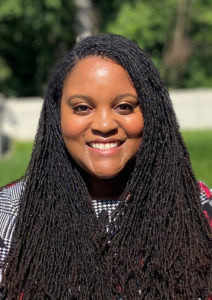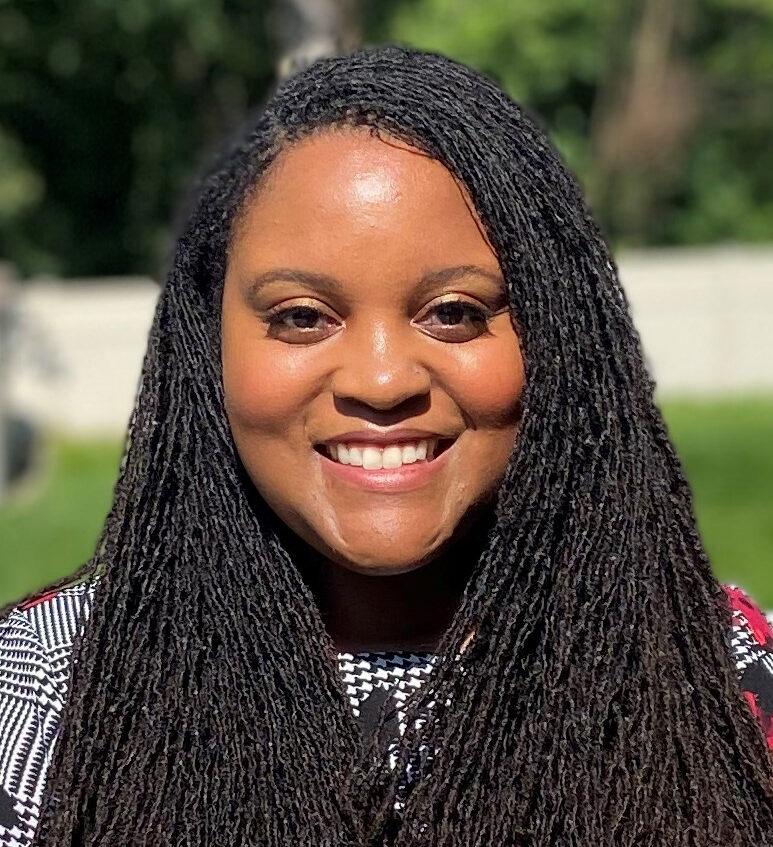 Shana E. Rochester is a research scientist at Child Trends. Her work aims to understand the ways in which early childhood settings and schools can support the academic and social development of young children from historically underrepresented communities.
Shana E. Rochester is a research scientist at Child Trends. Her work aims to understand the ways in which early childhood settings and schools can support the academic and social development of young children from historically underrepresented communities.
Can you tell us about your primary research interest(s)?
My primary research interest is the study of how adults in early childhood settings and schools can support children’s learning by incorporating aspects of the learners’ cultural knowledge and out-of-school experiences in their interactions. My work examines how strength-based approaches to classroom instruction, family-based interventions, and assessment design can create affirming learning environments.
What sparked your interest in using strength-based approaches to support children’s learning?
My educational experiences as a child often nurtured my academic curiosity while also affirming my identity as a young Black girl. For example, I attended summer enrichment programs that contextualized academic concepts within real-world experiences and reinforced my learning with field trips to places like the Reginald F. Lewis Museum of Maryland African American History and Culture in Baltimore. As an undergraduate at Spelman College, I became energized by my service-learning child development course and applied the course material to my experience volunteering at a child care center, honing in on how to tailor instruction to meet children’s needs. As I worked on research projects that employed strengths-based approaches as a graduate student and an early career professional, I became committed to understanding how these approaches can contribute to positive developmental outcomes for young learners.
What books or journal articles have most influenced you?
Two books have guided my work as an early childhood researcher: The Dreamkeepers: Successful Teachers of African American Children by Gloria Ladson-Billings and The Craft of Research by Wayne C. Booth, Gregory G. Colomb, and Joseph M. Williams. For me, it has always been important to read books that deepen my content knowledge alongside those that provide tips to cultivate good research practice, such as technical writing.
I’ve also spent a great deal of time reading children’s books for work and pleasure. After the Fall: How Humpty Dumpty Got Back Up Again by Dan Santat and African American Heroes by KD Novelties are among my favorites. The former is a beautifully written and illustrated story about facing your fears. The latter is a personalized book I received as a child that placed my name in the narrative and showed leaders like George Washington Carver, Mary McLeod Bethune, and Thurgood Marshall speaking directly to me about their lives and contributions to American history.
What are your hobbies or interests outside of research?
I love to decompress by working on complex diamond painting or paint-by-number projects. There is something about the balance of choice (i.e., complete the colors in the order of your choosing) and structure (i.e., preselected colors paired with certain parts of the canvas) that these activities provide that keeps me motivated to bring the image to life.
To wrap up, can you tell us a fun or interesting fact about yourself or your family?
I come from several generations of educators on both sides of my family. In fact, in 1894, my maternal great-great-great uncle, James R. Ruffin, founded the only secondary-level school that African Americans could attend within a five-county area in Virginia, named the Ruffin Academy. While I am an educational psychologist by training, I am honored to be part of a longstanding tradition of nurturing the minds of the next generation.
© Copyright 2025 ChildTrendsPrivacy Statement
Newsletter SignupLinkedInYouTubeBlueskyInstagram